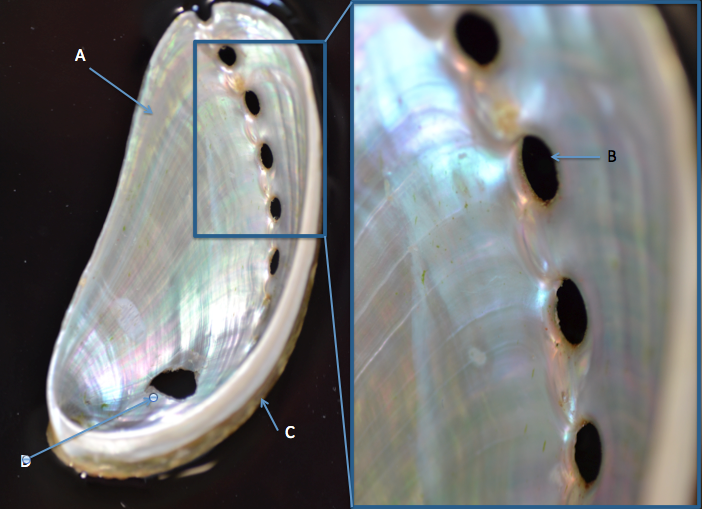|
Shell
In general, the shells of haliotis are heterogeneously made up of calcium carbonate polymorphs, proteins and polysaccharides (McDougall et al 2011). They are aeriform, which is ear shaped, giving its common name ear shells (Miller et at 2009). This is a low aspect open spiral structure with several respiratory pores and a thick inner layer of nacre on the inner surface (Miller et at 2009). The pores along the outer edge of the spiral are a characteristic feature of abalone and ate used for respiration (Fallu 1994). The shell is secreted by the mantel and is made up of calcium carbonate ‘tiles’ in a protein matrix (Lin and Meyers 2005, McDougall et al 2011).The protein allows the sidewise movement of the carbonate tiles, when the shell impacted and this slight flex makes the shell an extremely strong structure (Lin and Meyers 2005). Click hear for an in depth explanation by Professor Marc Andre Meyers. The shell of H. asinina is a lot thinner the other Haliotis (McDougall et al 2011). It is comprised of three layers the outer proteinaceous layer, prismatic layer in the middle and a nacreous layer at the base (McDougall et al 2011).
|

Fig 1: The shell of Haliotis asinina. A-The nacreous layer at the base of the shell. B- A pore along the outer edge of the spiral, acharacteristic of abalone.
|